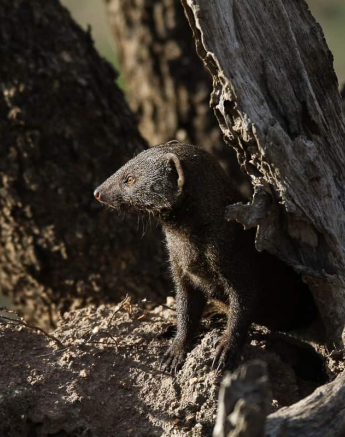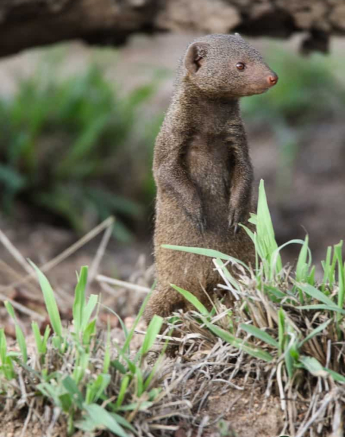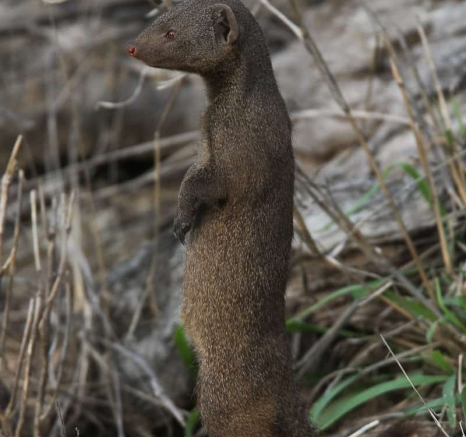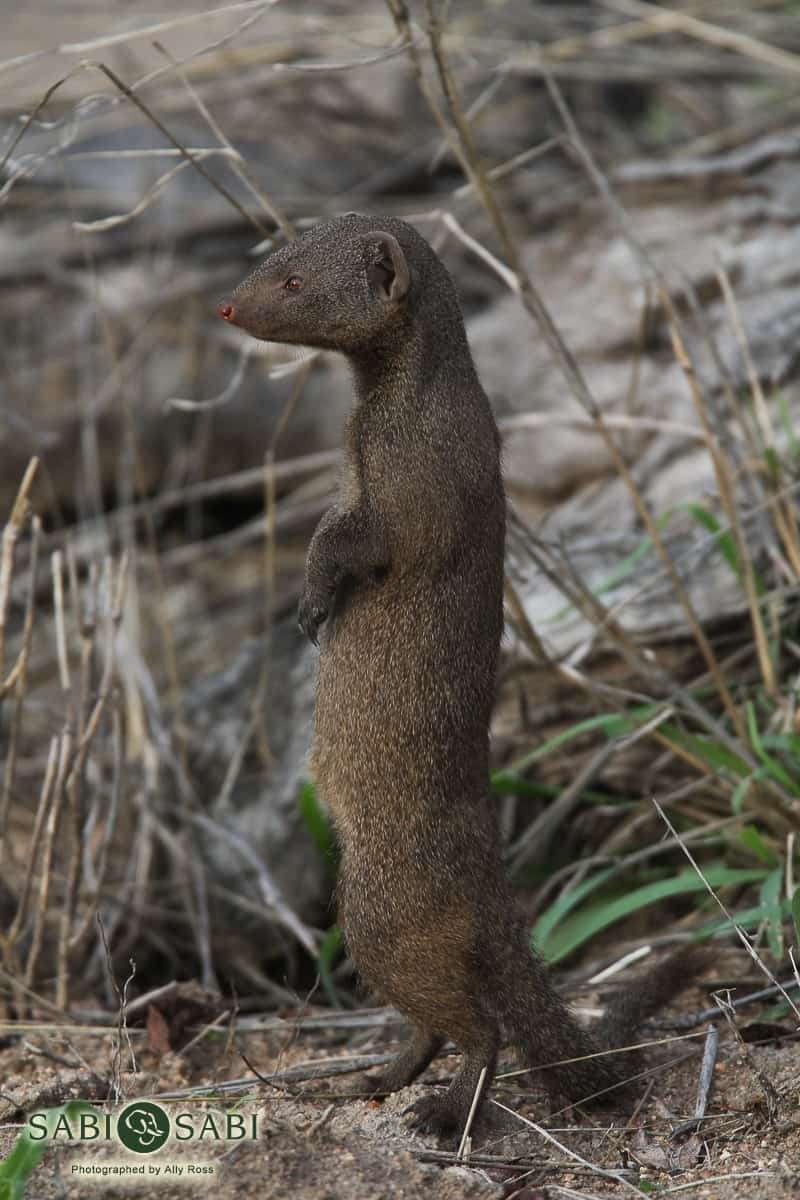Dwarf Mongoose
on Dec 21, 2018Species name: Dwarf Mongoose
Scientific name: Helogale Parvula
Weight: Males and females both weigh roughly 300g
Shoulder height: 40cm overall (body 20cm, tail 14-18cm)
General Habitat: The Dwarf Mongoose prefers relatively dry, open woodlands with adequate hiding places. A great example of this is termite mounds.
Diet: The Dwarf Mongoose is the smallest carnivore in the Lowveld, feeding on termites, snails, locusts, beetles, centipedes, scorpions, reptiles and eggs.
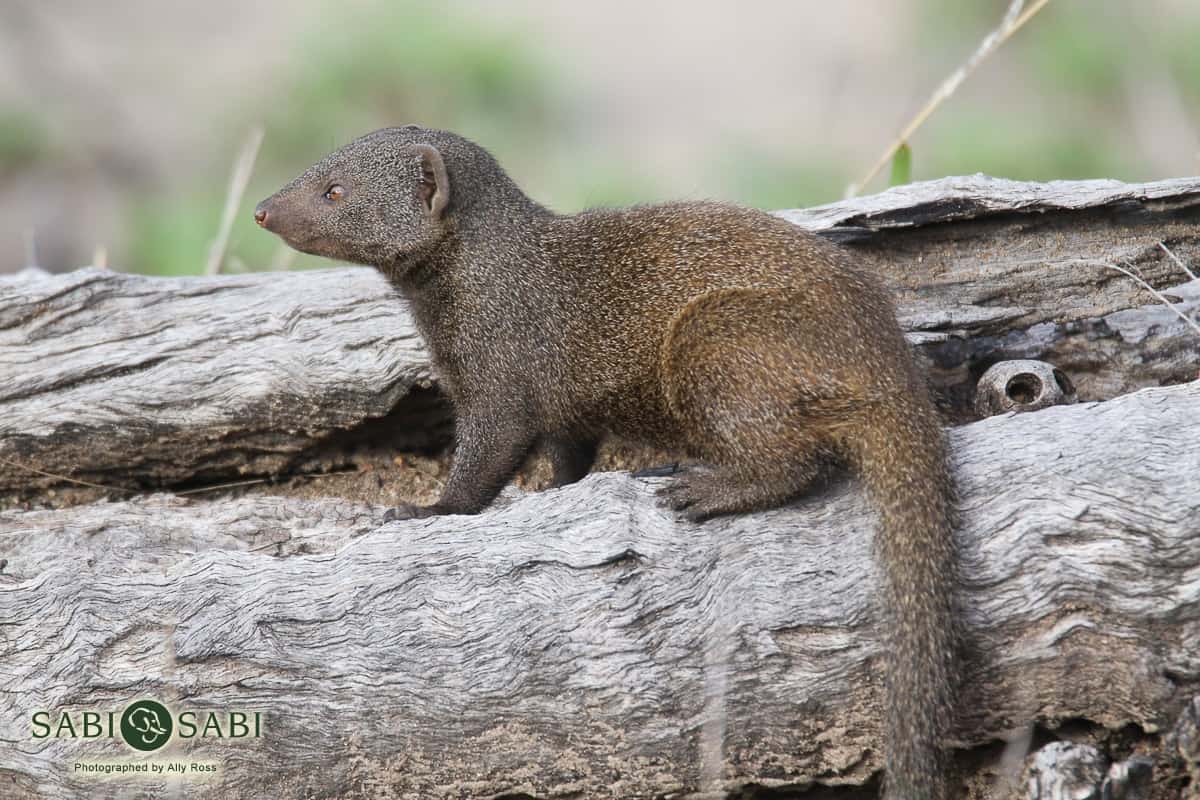
Dwarf mongooses utilise home ranges up to 1km². Within an area they require termite mounds, with exposed ventilation holes and other small refuges, such a pushed over trees, to act as night-time stopovers and bolt holes when threatened by predators.
Dwarf Mongooses are extremely social cooperative breeders and within their close-knit community show great organisation of roles. The family is run by an alpha female, who is responsible for breeding and leading as well as an alpha male who is responsible for initiation and defense of the group. Other members of the family perform duties that range from guarding, grooming, playing with, warming and transporting young as well as caring for the sick and wounded.
Why such a large family group you may ask?
Well the assistance of the group produces a collective effort that improves the survival of the individual. The more eyes and ears allow for a better coordinated warning system.
Despite these little guys having a home range, they are fiercely territorial over sleeping sites. They mark their sleeping sites by means of anal and cheek glands. These sites are also obvious by the accumulation of the entire group's scat in a nearby latrine. If a neighbouring group were to attempt to take over a sleeping site, the group will band together and mutually charge one another with aggressively bristled tails and biting advances. The larger of the two groups will generally displace the smaller group without injury and thus quickly settling the dispute.
When out on safari, look out for these little guys as they forage about. Dwarf mongooses are accomplished hunters and use a number of handy techniques to capture their prey, including the formidable scorpion!
Typically, they dig with very sharp claws to retrieve prey they have detected underground. They are also astute pouncers and either jump to snatch airborne insects or bound upon terrestrial and consuming them head first.
While foraging, they are very vulnerable to predators. Sentinels perch on vantage points to keep a lookout while the rest of the group continues to feed. Alarm calls include varying high-pitched calls that alert the group to danger. They will then either flee or come together to mob the predator.
So next time you’re out on game drive at Sabi Sabi, be sure to keep your eyes open as these little guys are very agile and athletic. They change direction in the blink of an eye and can bound distances over 90cm! Be sure not to miss them scurrying around.
My Memorable Sighting
One afternoon, whilst out on a “bush bumble”, I came across a family of Dwarf Mongoose. I decided to stop and spend some time with them, as they were feeding in a nice open area along a fire break. After about 10 minutes of watching these interesting little creatures, I suddenly heard the characteristic “Chuuurrr” and “Tsiii” of the Dwarf Mongoose. It was an alarm call. I saw a number of individuals had banded together and a few were standing on their hind legs. I looked up in the direction to which they were facing, there was a raptor flying above. Before I could focus my lens to snap a couple more pictures, they had all run off to the nearest tree hollow.
I really enjoyed the interaction and getting to see how all the family members work together to ensure the safety of the entire family.
Photo Content
